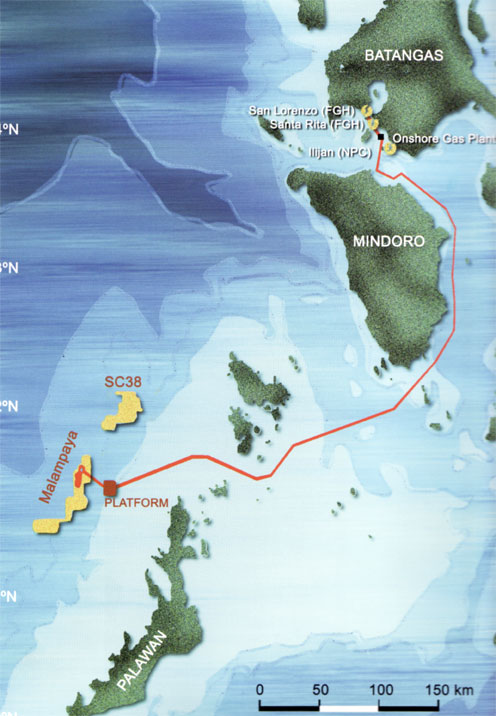 Shell plc announced plans of pumping in fresh investment of $1 billion to $1.2-billion for the phase 2 of the Malampaya deep water gas-to-power project.
Shell plc announced plans of pumping in fresh investment of $1 billion to $1.2-billion for the phase 2 of the Malampaya deep water gas-to-power project. The investment plan, which will also require eventual 'cash call' on Shell's partners at Service Contract (SC) American firm Chevron Corporation and state-run Philippine National Oil Company (PNOC) was sounded off by Simon P. Henry, chief financial officer of the multinational oil giant during a talk at the Makati Business Club.
The equity sharing arrangement of the consortium-members in Shell Philippines Exploration B.V (SPEX) would be45-percent each for Shell and Chevron; and 10-percent for PNOC.
Company executives explained that this is in line with the plan to extract additional gas from the Malampaya field that could run a new 300-megawatt power facility for roughly 25 years.
Part of the capital outlay would also be for refurbishment works on existing well to ensure gas supply reliability for the three existing gas sale purchase agreements (GSPAs), of which committed supply is now fuelling 2,700 megawatts of capacity for the electricity needs of the Luzon grid.
In a separate interview, Department of Energy (DoE) Undersecretary Jay M. Layug noted that the investment plan of the Malampaya consortium has already been submitted to them for approval.
"There's no need for new drilling, what they will do would be refurbishment of existing well to ensure reliability of gas supply for the three committed GSPAs, because remember, these are for 24 to 25 years," he stressed.
The magnitude of investment could be spread over five years, the energy official has explained, referencing on the workplan submitted by the Malampaya field service contractors to the DoE.
For the anticipated additional gas production, he stressed that the government's instruction would be for the consortium to already start seeking out new GSPAs with prospective takers.
The energy official added that the SC 38 group "may bid out the GSPA" to one or two parties or offer it on a negotiated deal, "as long as the process is transparent" and everybody interested would be afforded fair play.
The phase 2 of the Malampaya project, Layug further noted, would be anchored more on reinforcing the field's capability to sustain its life as anticipated over 24 years and set some level of security on the volume of gas supply already committed to buyers.
In the 1990s, the Shell-led consortium first invested $1.2 billion for the upstream component of the Malampaya venture. For the downstream, which included the power plants of First Gas group and Korea Electric Power Corporation, total investments hovered at $3.3 billion or for a total of $4.5 billion.

